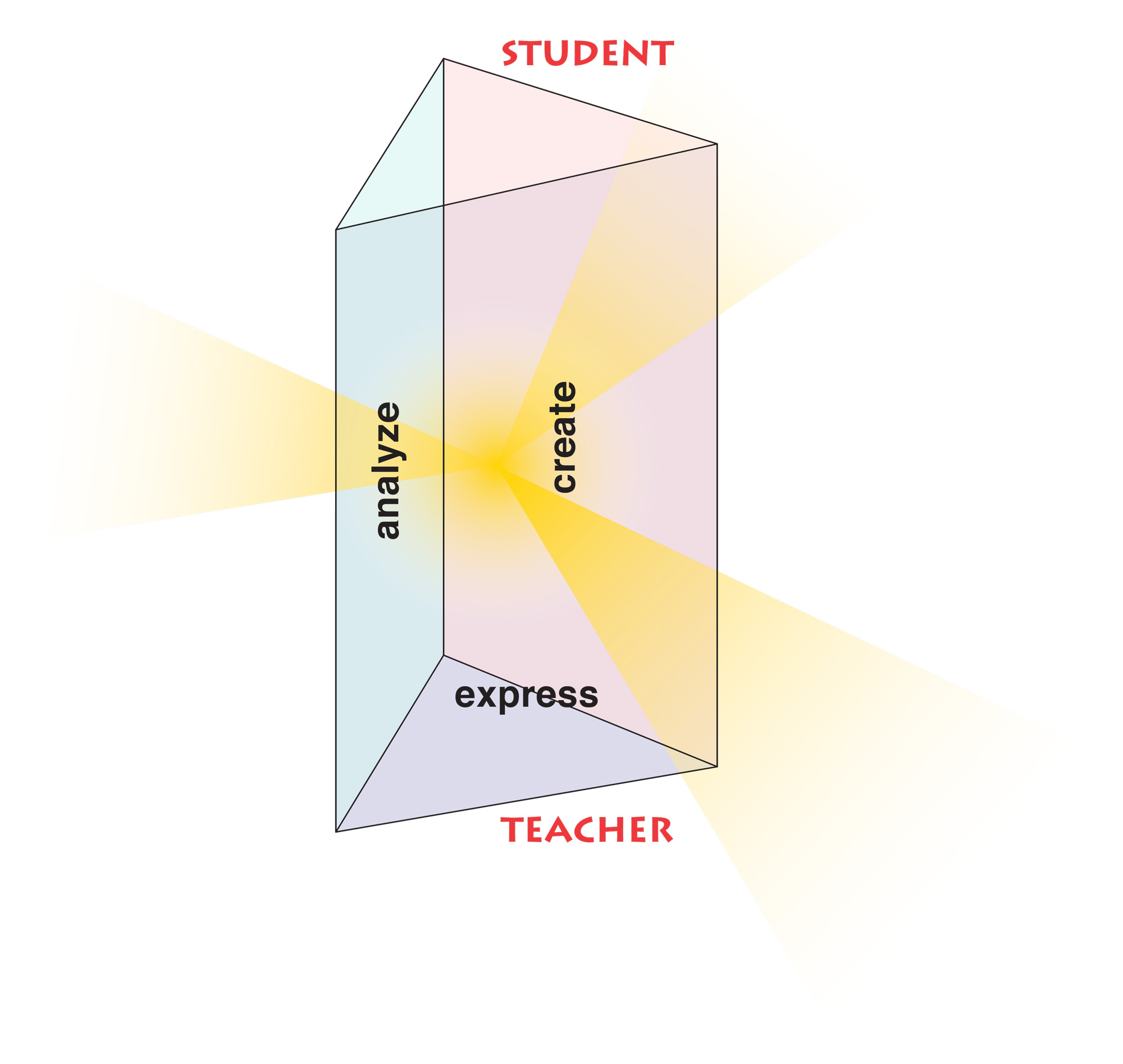
Learning to play the piano and teaching someone to play the piano are straightforward, yet mysterious, activities. What do we mean? There is the plain task of learning to read notes, count rhythm correctly, and “hit the right keys” through firing our fingers in perfect synchronicity. To learn, or to teach someone, to play the piano requires immersion in keys, scales, harmony, and musical form. Then there is the broad subject of technique and sound production. To weave all this together into a smooth and natural learning process really is a bit mysterious. Even daunting!
Fortunately, there are overriding principles of learning that we can apply over and over again to form, within the individual, organized knowledge and efficient skills that lead to freedom of musical expression.
The Piano Adventures curriculum uses a unique “triangle of learning” that applies both to the teacher and the student. Its acronym, ACE, reflects the standard definition of ace as “excellent, first-rate, outstanding.” The three components within the triangle—A, C, E—stand for Analysis, Creativity, and Expression. Or, to use action verbs, analyze, create, express.
Using the illustration below, let’s look more closely at each part of the ACE triangle. At the bottom we see the Teacher (in red) forming the foundation for learning. At the top we see the Student (also in red). Why is this? Isn’t the teacher in charge? The placements indicate that our mission is to uplift or raise the student using the A-C-E principles shown in the side panels of the triangle. We also notice that with the Teacher and Student at either end, the fuller expression of the triangle is a prism.

Let’s define these three words as each pertains to music.
Analyze . . . think about it
The origin of “analyze” is Greek and means “to break apart.”
The way we teach a piece and learn a piece ourselves should “break apart” its elements—show how the music is put together. Constant mini-analysis of early pieces leading to in-depth analysis of advanced repertoire will develop a strong musical understanding that can be a model for independent learning.
Create . . . explore and imagine
The origin of “create” is Latin and means “to make.”
In teaching, a natural entrée into creativity is to build opportunities for the student to make choices and changes. Short bursts of creativity using pieces at the lesson make learning lively, exploratory, and fun. A master teacher is always alert to encourage a student’s creativity using imagination, metaphor, and a spirit of play. Creative play engages a student’s attention and energy and promotes vibrant learning.
Express . . . communicate
The origin of “express” is Latin for “a pressing out.”
This “pressing out” implies there must be some impulse that sparks artistic expression. In music, expression starts with listening that primes the student to communicate a mood or feeling. The student makes a personal connection to the sound or words. The teacher is the bridge.
Our own expression as teachers should be characterized by using a variety of communication and teaching strategies. This will animate and elevate our teaching.
The core idea of the ACE learning and teaching model is to have a musical adventure that will grow . . . and grow . . . and grow.
Throughout the Piano Adventures curriculum analysis, creativity, and expression are instilled throughout the pages. Discovery and Creative Questions promote constant review and exploration.
Instructions at the top of the page are “straight-forward” for secure, goal-oriented education. Discovery and Creative activities step into more adventurous territory. The Theory Books follow suit with theory basics correlated with ear-training and improvisation that support those basics.
The word “prism” was mentioned in discussing the illustration. We could even venture to say that embracing A-C-E teaching brings about “prismatic teaching.” It gives the teacher three powerful concepts with which to educate, plan, and bring intellectual and artistic color to the lesson. There is so much freedom with this model for the teacher. And the student unconsciously begins to develop a “musical mind and heart.”
Though the books and curriculum offer a catalyst for ACE learning, it is the teacher who activates and guides the process using the materials to always analyze, create, and express. The student, joining in the process, becomes a contributor and champion in developing a unique self. And, as a result, enjoys and embraces the abiding, abstract, adventurous, aesthetic of music.

